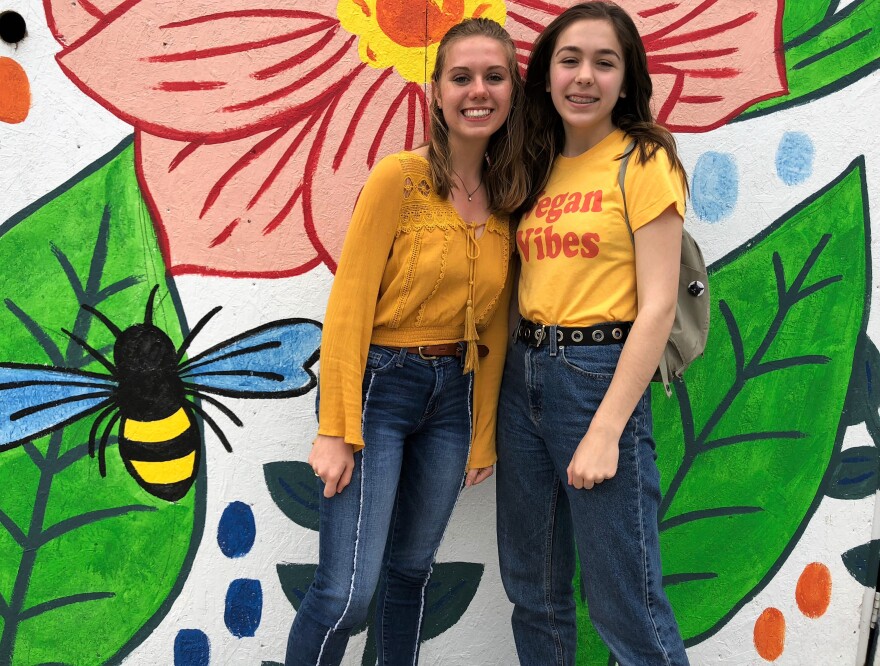This story was originally published on July 22, 2019.
Fifty years ago a burning river mobilized a generation of environmental activism. Citizens pushed for new laws to regulate pollution, and our water and air has gotten cleaner.
But significant environmental challenges remain including climate change, habitat loss, and plastics pollution.
Our series Watershed looks at today’s environmental warriors and the road ahead.
Reporters Jeff St. Clair and Jennifer Conn visited the area near where the river burned in Cleveland's flats. "The river actually smells good," Conn noted.
“It has been a remarkable transformation,” said St. Clair.
The two wondered if, back in the late 1960s, people ever thought there would be a time when they would want to spend a day beside the river.

City of Cleveland Sustainability Director Matt Gray grew up near the Cuyahoga.
“I think like a lot of people I didn’t come down to the river too much growing up,” he said.
Despite the progress made in cleaning up the river, significant environmental challenges remain, and for Gray it all boils down to two words.
“Climate change,” he said. “Number one challenge we face locally, regionally, nationally, globally.”
Although some people deny the effects of climate change, Gray said there’s no doubt change is happening in Northeast Ohio.
“I like to sum it up as warmer, wetter, and weirder,” he said.
It appears evident in the record high water levels in Lake Erie, heat waves, floods, droughts and other extremes in regions around the world.
But fighting invisible carbon pollution, Gray said, is every bit as daunting as stopping the oil and sludge that once poisoned the Cuyahoga.
“And in many ways it’s much, much harder to solve,” he said. “You can’t just stop a few big polluters. It’s us. It’s all of us.”
Everyone on the planet contributes to a lifestyle that’s unsustainable, according to Gina Burk, a co-founder of the Greater Akron Innovation Network for Sustainability, or GAINS.
GAINS holds workshops on building local food networks, reducing waste and using renewable energy.
Burk said the goal is to build the local economy.

“Resource locally whatever you’re doing,” she said. “Forget this international ‘get it from China’.”
She sees business as a partner in environmental awareness.
“Industry is the driver of sustainability,” she said. And all that’s missing today is the political will.
“We have the technology, we have the knowledge, we have the ability to do things, which we didn't have 50 years ago,” she said.
But Burk also believes a new generation of environmental activists is pushing for change.
St. Clair saw evidence of that in two Shaker Heights high school students who helped organize climate protests in Cleveland earlier this year, and are planning more for this fall.
Chloe Friedland and Sophia Stein are among the millions of young people inspired by Swedish teenager Greta Thunberg who has called for students to strike to speed up the response to climate change.
Friedland said time is running out.
“Because we only have like eleven years before climate change is irreversible they say,” she said. “So looking at my whole future ahead of me, it’s kind of like ‘we should probably do something about that before it’s too late.’”

Stein said she hopes today’s student protests galvanize the same momentum seen a generation ago.
“If we cause a big enough disruption in schools, in society, they have to do something” she said. “They have no choice if kids are constantly skipping school because they really want a change.”
Stein acknowledges it can be an uphill battle.
“You can’t convince everyone but as long as you can convince a certain number of people then eventually it’ll help, at least a little bit,” she said.
Many young people don’t remember the Cuyahoga River fire or when Apollo 11 landed on the moon the

same year. Just a month after the Cuyahoga River burned, Ohio astronaut Neil Armstrong stood 240,000 miles away, reading from a plaque: “Here men from planet earth first stepped foot upon the moon, July 1969 A.D.”
But while reaching for the stars, we left behind a planet choking on industrial filth. Today we have new lunar ambitions and new challenges here on earth.
The next decade may be a replay of half a century ago as we make plans for a new moon mission, meanwhile runaway carbon emissions could make large parts of the planet uninhabitable.
Maybe we’re waiting for the next wake-up call, the burning river moment that might reawaken a sense of a fragile planet in need of healing.








